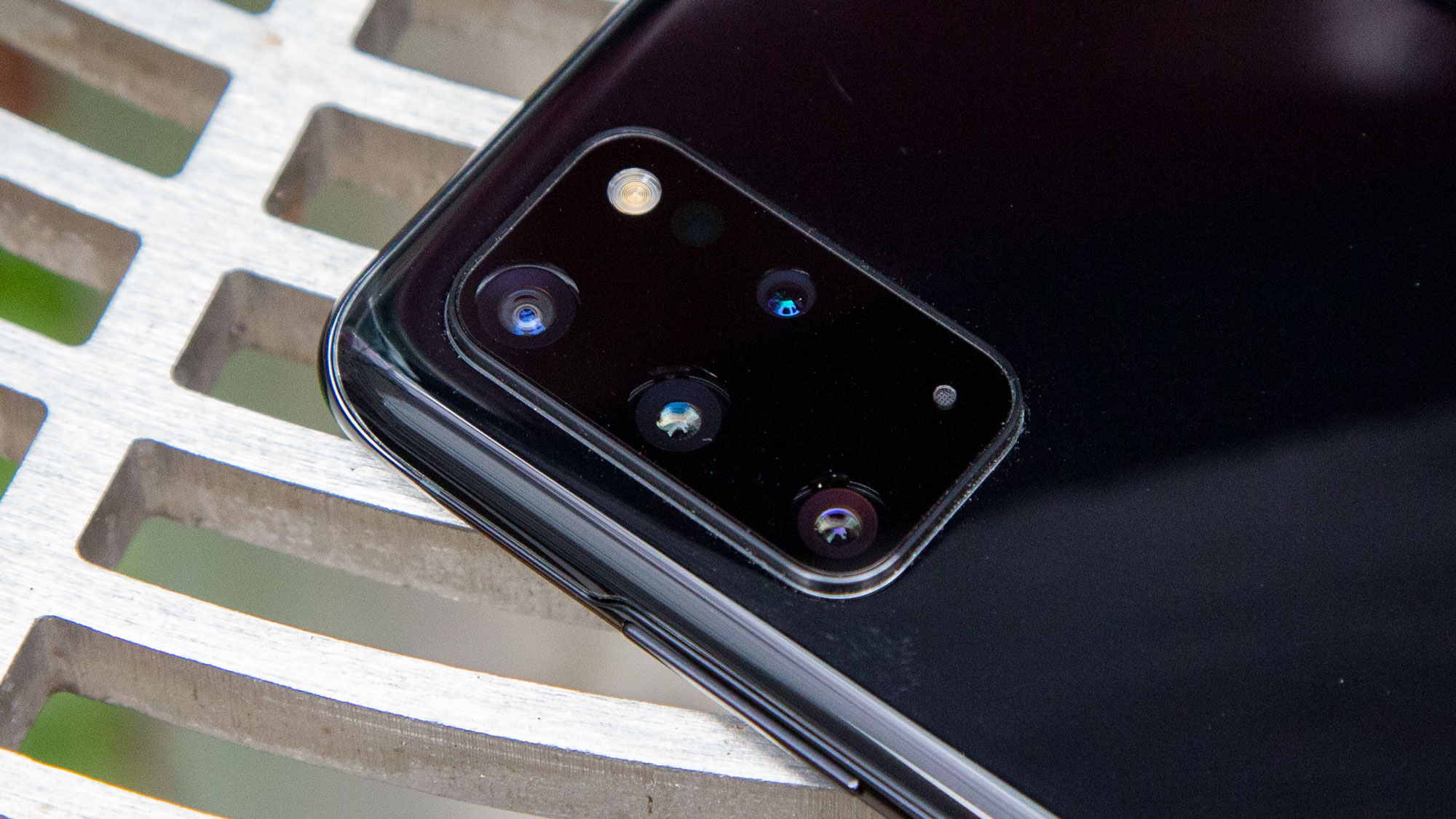Samsung Galaxy S20 Ultra vs Galaxy S20 Plus camera test: Is the Ultra $200 better?
The results will surprise you

Those interested in snapping up one of Samsung’s three new flagship phones might find themselves faced with a difficult decision: drop $999 or $1,199 on the Samsung Galaxy S20 or Samsung Galaxy S20 Plus, or go all out and spend a whopping $1,399 on the 108-megapixel Samsung Galaxy S20 Ultra with its exclusive 10x lossless zoom.
While both the S20 Plus and the S20 Ultra sport quad-lens rear cameras, the quantity of optics is really all they share in common. Under the hood, these two devices are backed by two totally unique imaging stacks. And, as we discovered in our testing, they happen to excel in different areas, too.
- The best camera phones in 2020
- The best Android phones you can buy today
- Plus: Should you buy a 5G phone in 2020?
With that in mind, we’ve compiled a few head-to-head comparisons using similar shots captured with the S20 Plus and S20 Ultra to help you determine what the extra $200 expense on Samsung’s range-topping Galaxy really gets you. Chances are, our conclusion will surprise you. And you can look forward to our upcoming reviews of both the Galaxy S20 and S20 Plus for deeper dives into both phones’ cameras.
Galaxy S20 Ultra vs Galaxy S20 Plus: Chrysler Building
We start with this shot of Manhattan’s iconic Chrysler Building, captured utilizing 30x digital zoom on both phones. This is the maximum possible zoom the regular S20 and S20 Plus can reach, though the S20 Ultra can go all the way up to 100x power, thanks to its exclusive 4x optical prism system — something the other models lack.
Thus, the difference isn’t hard to see; the S20 Ultra doesn’t deliver the sharpest shot in the world from such an extreme distance, though it certainly fares better than the blurrier example from the S20 Plus. It’s worth pointing out here that the S20 Plus achieves its 3x optical zoom simply by cropping into the center of its 64-megapixel sensor. In other words, the telephoto on the S20 Ultra doesn’t actually incorporate a significantly different field of view compared to the primary lens — it just has more megapixels to work with.
Galaxy S20 Ultra vs Galaxy S20 Plus: Portrait
Both the Galaxy S20 Plus and S20 Ultra benefit from dedicated time-of-flight sensors that can measure the distance to subjects. That’s extremely valuable for shallow depth-of-field portraits, like the kind you can capture using Samsung’s Live Focus mode.
Surprisingly though, the portrait I captured of my colleague Mark using the S20 Ultra’s cutting-edge camera didn’t actually turn out better than the S20 Plus’ rendition. The Ultra does a slightly better job of grasping detail in Mark’s skin tone, but the overall result is a bit blurry — something you can especially notice if you focus on the plaid pattern in his shirt.
Sign up to get the BEST of Tom's Guide direct to your inbox.
Get instant access to breaking news, the hottest reviews, great deals and helpful tips.
Meanwhile, the S20 Plus turned in a generally sharper result, with appropriate contrast that more realistically separated Mark from his background. You wouldn’t expect the cheaper device to come out ahead here, but this example proves Samsung’s still got those kinks it needs to work out with the S20 Ultra’s sophisticated camera before it can fully realize the system's full potential.
Galaxy S20 Ultra vs Galaxy S20 Plus: Cookies
For these shots of a plate of delicious-looking cookies, both phones utilized Samsung’s AI-based Scene Optimizer technology, which correctly opted for the food setting to bring out those delectable nooks and crannies.
Once again, however, it’s the S20 Plus that delivered the crisper, more Instagram-worthy result. The S20 Ultra obscured a lot of detail here, with the cookie nearest to the camera falling out of focus toward the fore, and generally failing to pick up light in quite the same way.
There’s also less separation in the shadowy regions of the dark chocolate cookies stacked on the left side in the S20 Ultra's shot, and everything simply takes on more of a matte appearance through this phone's lens. If I had to share one of these shots on social media, it wouldn’t be a tough choice; the S20 Plus’ version simply makes your mouth water.
Galaxy S20 Ultra vs Galaxy S20 Plus: Ultra low light
These two images taken in near-darkness inside Tom’s Guide’s video studio highlight critical differences in the way night mode acts on the S20 Plus’ and Ultra’s unique camera hardware.
There’s something to like about both pictures here. The S20 Plus delivers a sharper U.S.S. Enterprise, while the Ultra’s shot benefits from a natural depth-of-field effect that blurs the plant on the right. The latter is a pleasing effect — and one you wouldn’t expect from a photo captured in such little light — though the Ultra also casts the frame in an off-putting yellowish tint. It’s a known issue affecting the S20 Ultra’s night mode in particular, and it’s clearly rearing its ugly head here again.
For what it’s worth, Samsung is working on a future software update that could address the Ultra’s strange white balance issues in low-light photography. But as it stands, this is another case where it’s difficult to pick a winner. That’s surely better news for the cheaper S20 and S20 Plus compared to the $1,400 model.
Galaxy S20 Ultra vs S20 Plus: Grand Central ultrawide
It’s hard to suss out any differences between the output of the S20 Plus and Ultra here, in this face-off between both devices’ ultrawide lenses captured inside New York’s Grand Central Station.
That’s likely because both of these phones actually use the same 12-MP, 120-degree ultrawide camera. In fact, that lens is the only commonality shared between all Galaxy S20 devices, meaning that no matter which of Samsung’s flagships you purchase, your zoomed out shots should look about identical. That certainly rings true for this particular example.
Galaxy S20 Plus: Does it have auto focus issues?
Oh, and here’s something else you should be wary of when shopping for a Galaxy S20 on the basis of the phones’ cameras. The S20 Ultra has been found to suffer from some auto focusing hiccups, especially when recording video. This issue tends to express itself as jumpiness when you move about and point the phone at different objects in quick succession. The Ultra’s camera has a bit of a hard time keeping up with subjects as it stands, though again, this is something Samsung hopes to address in a future update.
However, the S20 Plus does not look to suffer from these same issues based on our initial testing. Focus seems consistent and generally less sensitive to panning and shifting angles. It’s not quite as locked in and smooth as, say, the iPhone 11 Pro’s focus when shooting video, though it’s definitely less finicky than the S20 Ultra’s — another unexpected win for the cheaper Galaxy handsets.
Bottom line
The primary reason one might opt for the Galaxy S20 Ultra over the cheaper Galaxy S20 or Galaxy S20 Plus is the Ultra’s unique camera. Though, as we’ve found, the Ultra’s special imaging hardware doesn’t always translate to better photos. In fact, in some cases, it actually hurts it.
That’s a tough pill to swallow for anyone spending $1,399 on the most expensive Galaxy S20. Of course, the S20 Ultra still has the upper hand when it comes to zoom. Currently, no handset can compete with its 10x hybrid lossless shooting, or even the kinds of shots it can churn out at 30x power. (In fact, most smartphones, like the iPhone 11 Pro, can’t even go past 10x.) Plus, S20 Ultra buyers also get that marvel main camera that can take 108-MP shots — though in most cases, you'll want to leave it in auto mode, where it produces lower-resolution images with optimized post-processing.
It also remains to be seen how many of the Ultra’s weird camera quirks and gremlins will be corrected by Samsung’s upcoming software update, which is expected to drop in the coming weeks. It could tip the scales back in the Ultra’s favor.
Still, right now, when you factor in the breadth of shooting scenarios outside of zoom alone — from portraits, to extreme low-light situations, ultrawide landscapes and so on — the less-expensive S20 variants are generally just as good as the Ultra where it counts. And though that might not be the verdict Samsung was hoping for, it does mean you can rest assured you’ll still get a pretty exceptional camera phone even if you resist spending top dollar.
Adam Ismail is a staff writer at Jalopnik and previously worked on Tom's Guide covering smartphones, car tech and gaming. His love for all things mobile began with the original Motorola Droid; since then he’s owned a variety of Android and iOS-powered handsets, refusing to stay loyal to one platform. His work has also appeared on Digital Trends and GTPlanet. When he’s not fiddling with the latest devices, he’s at an indie pop show, recording a podcast or playing Sega Dreamcast.
